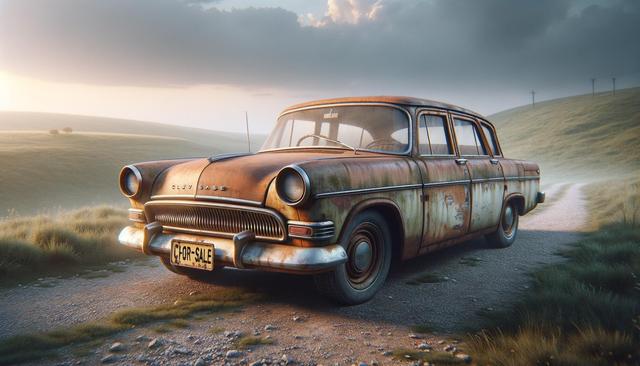Understanding What Qualifies as a Clunker Car
The term ‘clunker car’ typically refers to a vehicle that’s seen better days—older models with high mileage, visible wear and tear, or even minor mechanical issues. These cars might not be suitable for long-term daily driving, but they can still serve a purpose. For example, some buyers seek clunkers for spare parts, restoration projects, or temporary transportation. Understanding what makes a car a clunker is essential for both sellers looking to price their vehicle realistically and buyers trying to determine if the deal is worth pursuing. Common characteristics of clunker cars include:
- Over 150,000 miles on the odometer
- Rust or body damage
- Mechanical problems or outdated parts
- Low resale value according to local market standards
Despite their limitations, clunker cars can be legally sold as long as the seller discloses all known issues. Transparency is key in these transactions to avoid disputes and ensure that both parties understand what’s being exchanged.
Reasons Someone Might Want to Buy a Clunker Car
While clunker cars may not attract every type of buyer, there are specific reasons why someone might actively seek one out. For budget-conscious individuals or mechanically inclined buyers, a clunker can offer a practical solution. Here are a few motivations behind such purchases:
- Access to inexpensive transportation for short-term needs
- A base for a DIY project or vehicle restoration
- Source of spare parts for another similar vehicle
- Learning tool for automotive students or hobbyists
For buyers with limited finances or specific needs, clunker cars represent an opportunity to own a vehicle without the financial burden of a new or certified used car. However, it’s important for buyers to properly inspect the vehicle or have a mechanic assess its condition before finalizing the purchase.
Things to Consider When Selling a Clunker
Selling a clunker car involves more than just listing it for sale. To increase the likelihood of a successful transaction, sellers should take a few important steps. First, gather all relevant documentation, including the title, registration, and any maintenance records. Being upfront about the car’s condition can also help build trust with potential buyers. Sellers might consider the following avenues for listing their clunker:
- Online classifieds and local marketplaces
- Social media groups focused on car sales
- Auto salvage yards or scrap buyers
- Private sale through word of mouth
Pricing a clunker realistically is crucial. Overpricing may deter interested buyers, while underpricing could lead to missed value. Comparing similar listings in the area can help determine an appropriate price range. Additionally, removing personal items and giving the car a basic cleaning can improve its presentation and appeal.
Legal and Safety Aspects to Keep in Mind
Whether you’re buying or selling a clunker car, it’s vital to stay compliant with local laws and regulations. This includes ensuring that the title is properly transferred and that all necessary documentation is completed. In some regions, sellers may be required to provide a bill of sale or even a recent emissions test, depending on the car’s condition and age. Safety considerations are also important. For example:
- Ensure the brakes and lights are functional, even if the car isn’t in perfect condition
- Disclose any major safety concerns to the buyer
- Remove license plates and cancel registration once the sale is complete
Failing to follow legal procedures could result in fines, liability issues, or future complications. It’s also a good idea to keep a copy of the finalized paperwork for your records, especially in private sales.
Maximizing Value from a Clunker Transaction
Even if the car is no longer roadworthy, there are ways to extract value from it. Some sellers choose to part out the vehicle, selling individual components like the engine, transmission, or tires. Others might explore trade-in options with local dealerships that accept clunkers, sometimes offering credit toward another purchase. For sellers looking to dispose of the car entirely, scrap yards and donation programs can provide a solution—some even offer free towing services. Here are a few ways to maximize value:
- Sell working parts individually if time and tools are available
- Compare offers from multiple junk or scrap buyers
- Donate the vehicle for a potential tax benefit
For buyers, negotiating based on the car’s flaws can bring the price down to a manageable level. Buyers should also consider the long-term costs, such as repairs and maintenance, to ensure the purchase remains a good deal. With the right approach, both parties in a clunker car transaction can walk away satisfied.
Conclusion: Making the Most of a Clunker Car Opportunity
Buying or selling a clunker car isn’t just about getting rid of an old vehicle or finding a cheap ride—it’s about making informed decisions that meet your specific needs. Whether you’re a seller looking to clear out space or a buyer in search of a project or affordable transportation, understanding the value and responsibilities associated with clunker cars can lead to a successful and worthwhile transaction. Always prioritize transparency, legal compliance, and realistic expectations to ensure a smooth experience from start to finish.












